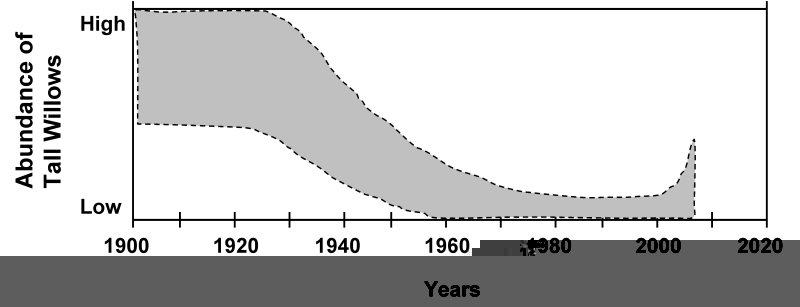

Figure Set 1: Changes in cottonwood and willow abundance in the 20th century.
FIGURE SET

Figure 1-1. The number of narrowleaf cottonwood trees established during 20-year intervals in a 9.5 km2 area of the Lamar Valley, northern Yellowstone National Park. Ages were derived from size class data collected in 2001. Open bars represent numbers of cottonwoods on floodplain sites; closed bars are cottonwood numbers on meander sites (see "Student Instructions" for more information). The floodplain and meander tree populations were kept separate, because trees grow at different rates in these locations, requiring different age estimates based on tree diameter. The black bar on the far right represents an estimate of cottonwood seedling density on the entire study site in 2001, and is on a different scale (thousands vs. 50-60). The shaded area indicates expected numbers of cottonwoods in each age class under conditions of frequent/regular recruitment. From Beschta (2003).

Figure 1-2. Twentieth century time series of the status of riparian willow communities on the Gallatin River, within and adjacent to northern Yellowstone National Park. Willow height and abundance were estimated from historical photographs as well as historical records and field measurements; "tall" willows are those > 100 cm (but note that the shrub willows in this region may reach heights of 3 m or more under good conditions). The shaded region between dashed lines reflects the range of variability/uncertainty in the data, since they are based mainly on qualitative assessments as opposed to absolute measurements. After Ripple and Beschta (2004a).